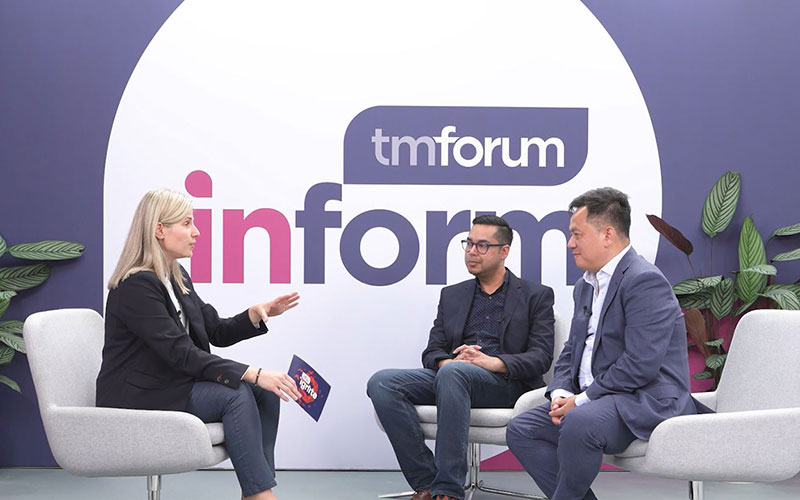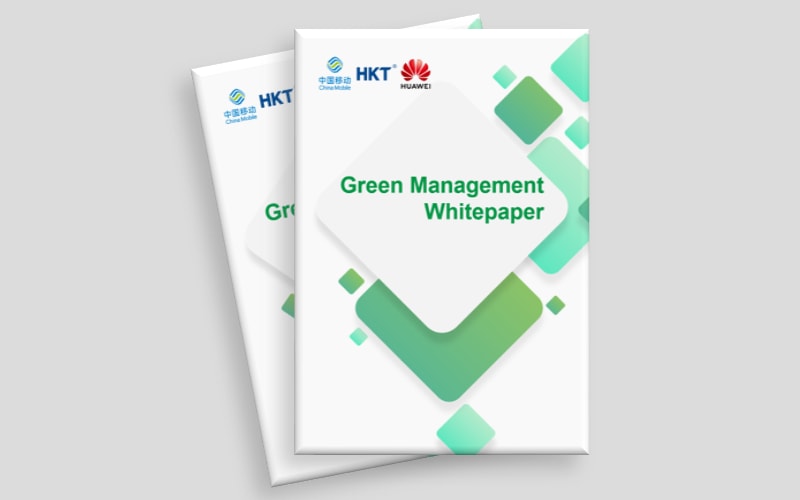New Solutions
Two Key Advances in Green Packaging
Two of our latest packaging innovations have measurably cut CO2 emissions and the wood used for transporting 5G MIMO products
Two of our latest packaging innovations have measurably cut CO2 emissions and the wood used for transporting 5G MIMO products, helping to reduce the huge environmental cost packaging has on a global scale.

A green and sustainable approach to packaging is as important as protecting products in transit and smooth logistics. We believe that the legacy problems limiting the widespread adoption of green packaging solutions can be solved by improved technology and processes.
Huawei's packaging teams use technology to reflect the company’s long-term commitment to simplicity, eco-friendliness, and recyclability when it comes to product design and packaging. Building on our progress in high-strength corrugated boxes, thin honeycomb paperboard, and other new materials, two of our latest innovations are multi-density cushioning technology using self-assembly expanded polypropylene (EPP) materials and lightweight plastic-steel pallets.
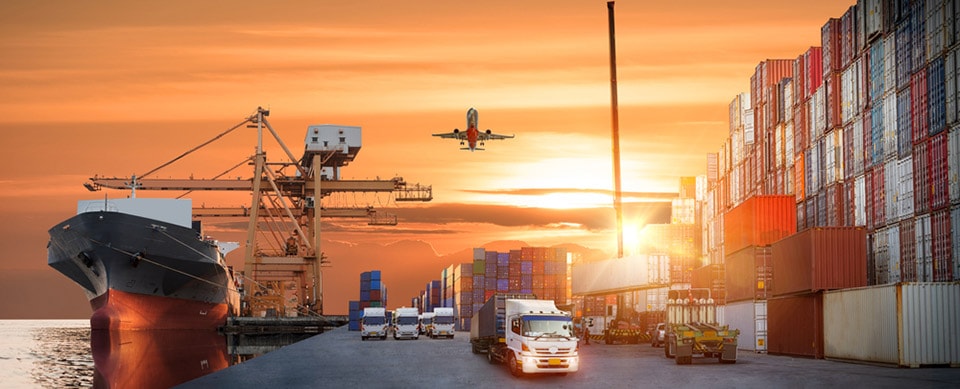
5G MIMO
5G MIMO technology deployed in base stations requires larger antenna arrays and more of them. Compared with 4G, bigger and heavier base station equipment places new requirements on logistics and transportation, which in turn needs to be offset by lighter and more energy-efficient packaging. Huawei’s packaging teams developed two solutions to achieve this:
Multi-density Cushioning: Less Is More
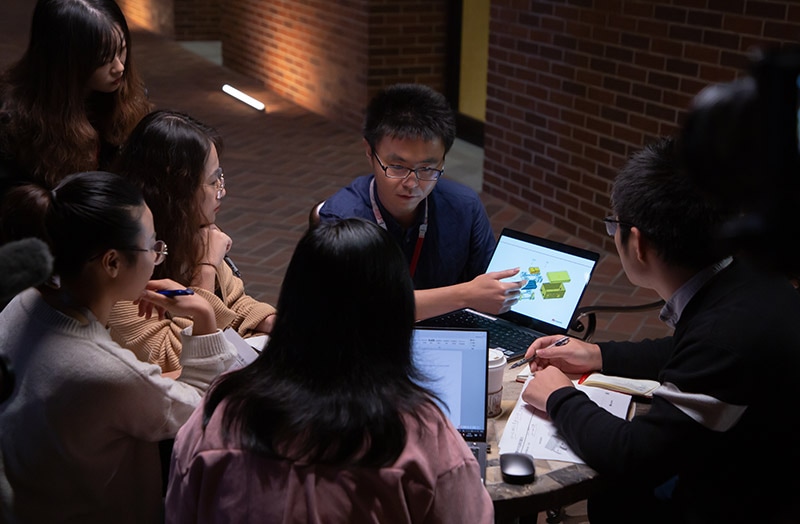
Huawei packaging team discussing design
Multi-density cushioning technology mixes raw materials of different densities into one mold. Starting in 2017, the packaging team in Huawei's MPE (Mechanical Power Environment) department began researching EPP materials that offer better cushioning performance but are recyclable.
The team mixed materials with two different densities in one mold to reinforce certain parts of the cushioning pad, identifying where the two materials should combine and how to control the composite interface using the mold. For testing, they ran different tolerances on a simulation model, including drop impact, vibrations from transportation, and stress limits. The resulting data contributed to the final design, which was then tested in a lab setting.

Collision and impact testing
The technology is currently used for Huawei's wireless base station and server products. Providing the same protection as conventional single-density foam, multi-density cushioning reduces the packaging required by 38% for 5G MIMO products. In 2020, this technology reduced packaging weight by 1,362 tons – the equivalent of 2,165 tons in CO2 emissions.
We aim to reduce the packaging volume, ensure product reliability through technology, and work with industry peers to optimize packaging techniques and drive the entire industry forward.—— Liu Sisi, Packaging expert, Huawei 2012 Laboratories


Lightweight Plastic-steel Pallets: Keeping the Wood for the Trees
Huawei's manufacturing department has a dedicated team for conserving resources in logistics. In 2019, they developed a new type of recyclable pallet for carrying products like wireless 5G base stations — the lightweight plastic-steel pallet. Traditional plywood pallets are disposable, easily breakable, and consume huge amounts of wood. The new lightweight plastic-steel pallets are not only more durable, they can also be recycled.

Plastic-steel pallets in production
They’re also up to 70% lighter. In 2020 alone, they reduced the total weight of Huawei's shipments by 4,739 tons, wood use by 39,500 m3, and potential CO2 emissions by 23,900 tons. Lighter pallets also lightened the loads being transported by truck, lowering gasoline consumption and carbon emissions.
Packaging contributes to a product’s overall value. We’re committed to creating eco-friendly packaging by applying the spirit of craftsmanship.—— Liu Hongchun, Packaging expert, Huawei Manufacturing Engineering Dept.
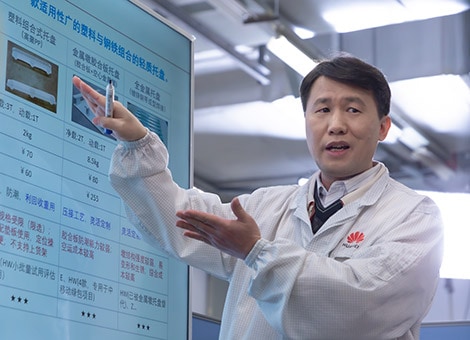
-
Multi-density cushioning technology
5G MIMO product packaging volume: Down 38%; Weight reduced in 2020:1,362tons
reducing CO2 emissions by 2,165 tons
-
Plastic-steel pallets
Weight reduced in 2020: 4,739 tons; Wood saved in 2020:39,500 cubic meters
reducing CO2 emissions by 23,900 tons
In 2020, Huawei completed more than 300,000 shipments using these two green packaging technologies, saving more than 75,000 cubic meters of wood.
The 6R1D Philosophy
Huawei’s packaging teams follow a “6R1D” green packaging strategy: Right, Reduce, Return, Reuse, Recycle, Recover, and Degradable. The strategy has helped Huawei build a green system that covers the entire lifecycle of its products, from materials selection, product design, packaging, and transportation to recycling and reuse.
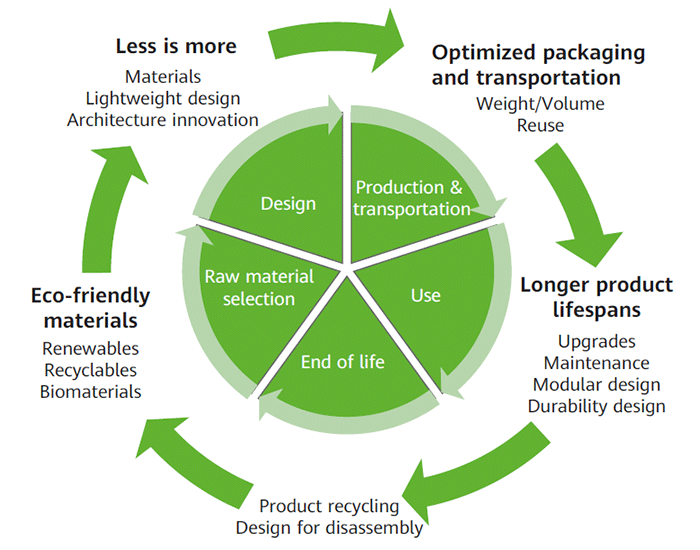
Contributing to a Green World with Green Packaging
Huawei's green packaging team believes that alongside its own efforts in developing biodegradable and recyclable packaging materials, more companies will follow suit and develop packaging techniques. Current trends confirm this: The consulting firm Technavio estimates that the global packaging market will grow at a CAGR of nearly 6% between 2017 and 2021.
Green packaging is an intrinsic part of building a green world, a long-term aim to which Huawei is committed and where every step forward matters.




